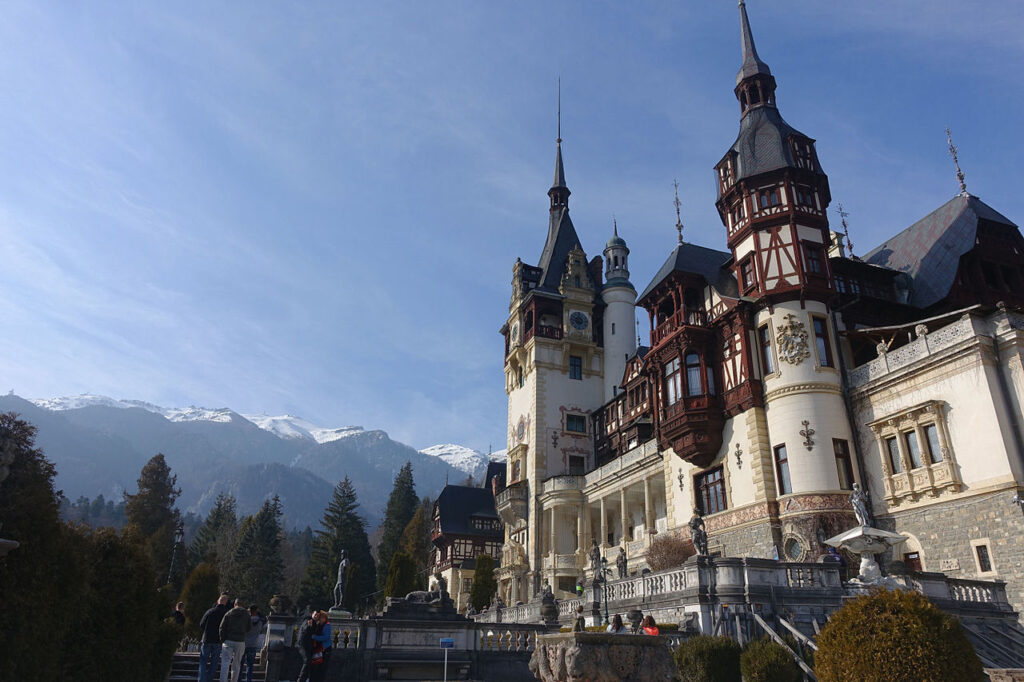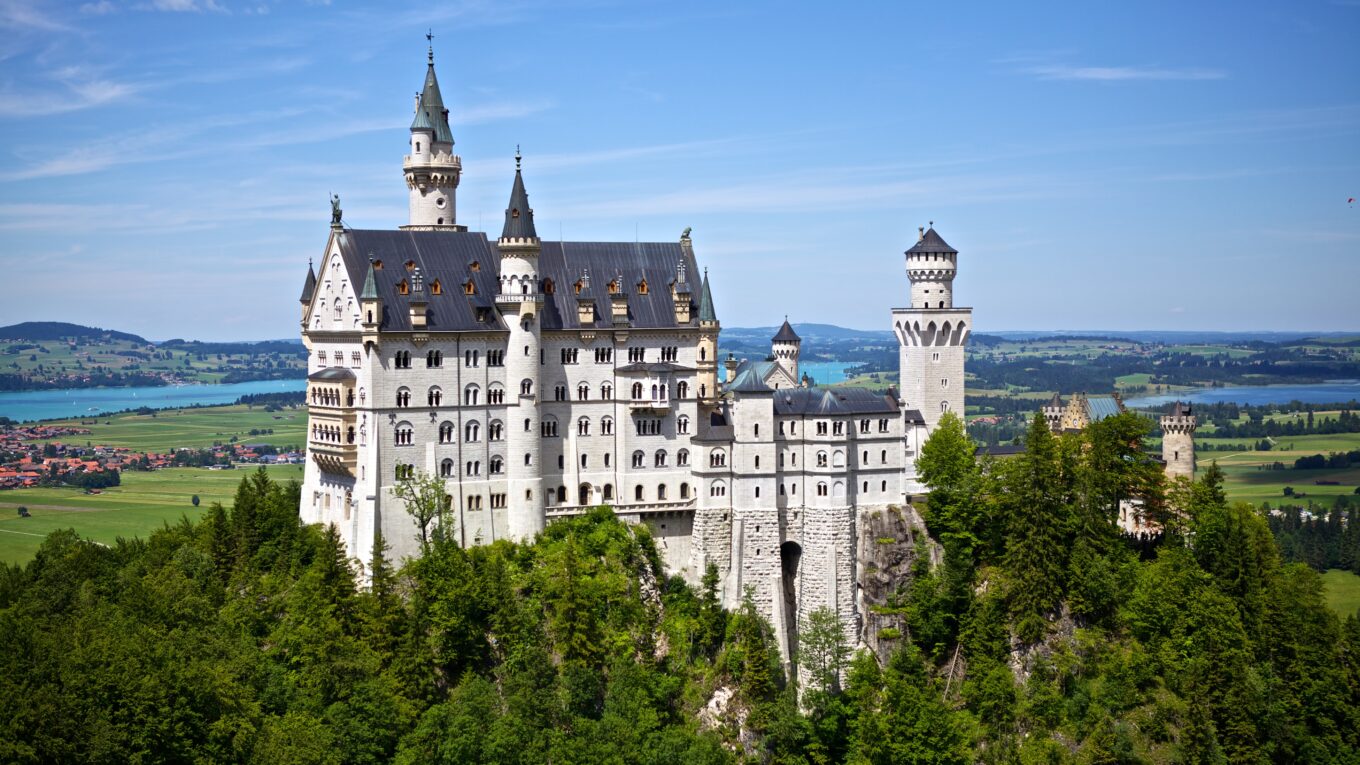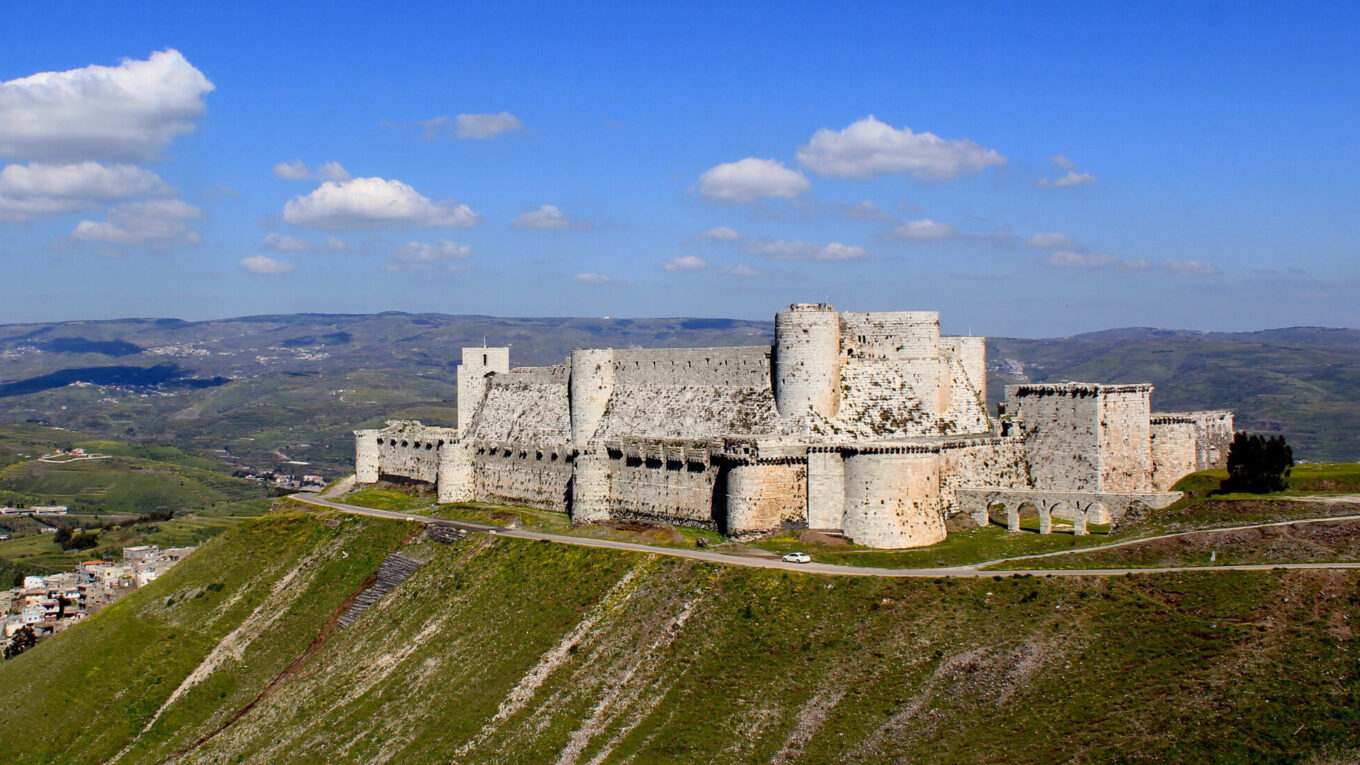The Castles of the Romantic Age
Romanticism was a popular movement in art, literature, and architecture that emerged in the 19th century. Romantic Architecture utilized idealistic imagery and historical motifs to create buildings reminiscent of the glory days of Medieval Europe. The Romantic Style was popular with wealthy families who wanted residences resembling those of Europe’s great dynasties. Although the Castles of the Romantic Age were meant to resemble older Medieval Castles, they were never really intended for defense. Instead, they were lavish residences, complete with all the comforts of the 19th Century. The article below will highlight 15 of the Greatest Castles of the Romantic Period, and show how they are iconic structures even in the modern age.
What is Romanticism?
Romanticism was a movement in art, literature, and architecture. It emerged in the early 19th century and was first adopted by sculptors and painters. Romantic Art was idealistic, imaginative, and reflective of an older more dignified age. It attempted to depict perfect beautiful scenes that showed a world more composed than the one we actually live in. The image below shows a painting by John Martin, an English Romantic Artist. The subject is ancient Egypt, drawn in a glorified and fanciful manner – these ideas repeat throughout Romantic Architecture.
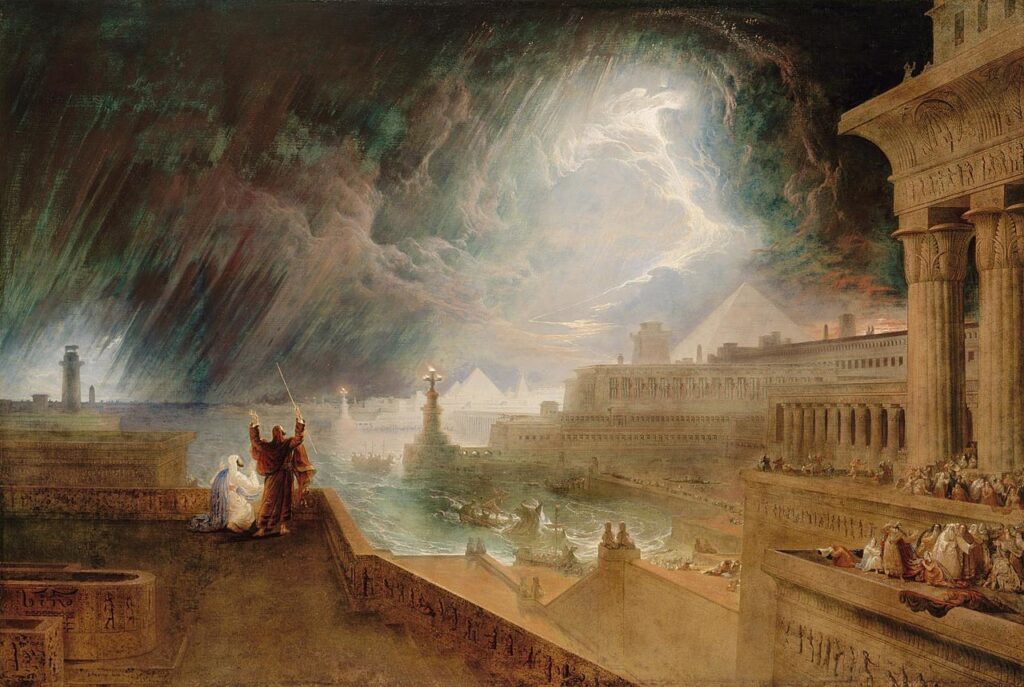
When was the Romantic Age?
The Romantic Age began during the early 1800s and lasted until about 1900. The Baroque and Rococo Periods preceded the Romantic Movement, and Romanticism was in many ways a reaction to the over-the-top exuberance of those styles.
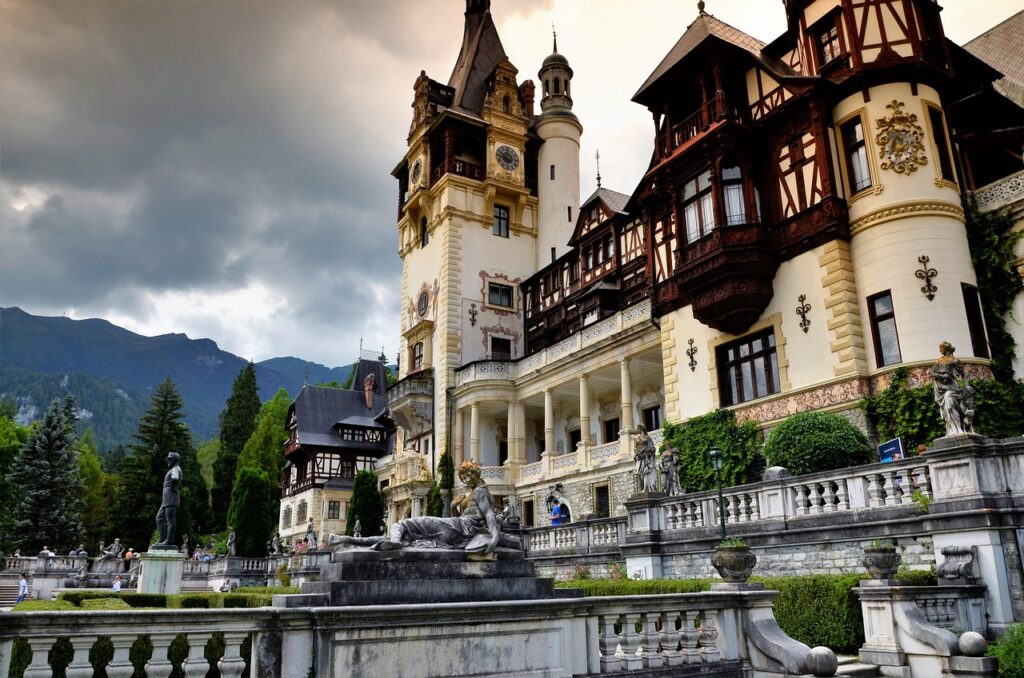
What are the Greatest Castles of the Romantic Age?
Below is a list of 15 of the greatest Romantic Castles from the 19th century. The order of the buildings is based on their size, splendor, and overall influence on the Romantic Movement.
1. Neuschwanstein Castle – Bavaria, Germany
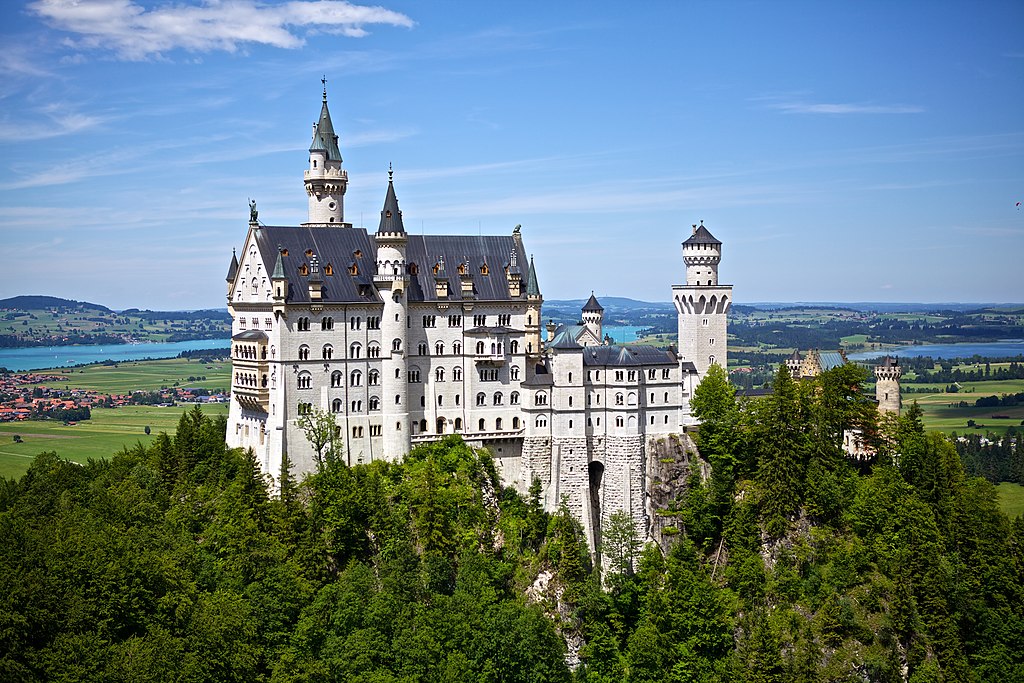
Neuschwanstein Castle is by far the most well-known castle from the Romantic Age. Although it looks like an extremely Formidable Fortress, Neuschwanstein Castle was actually a luxurious home built for the King of Bavaria, Ludwig II. He ruled from 1864 until 1886 and his reign was highly controversial. Although he was popular for building impressive monuments, Ludwig also had a terrible spending problem. He used most of the state’s funds creating this summer retreat in the foothills of the Bavarian Alps.
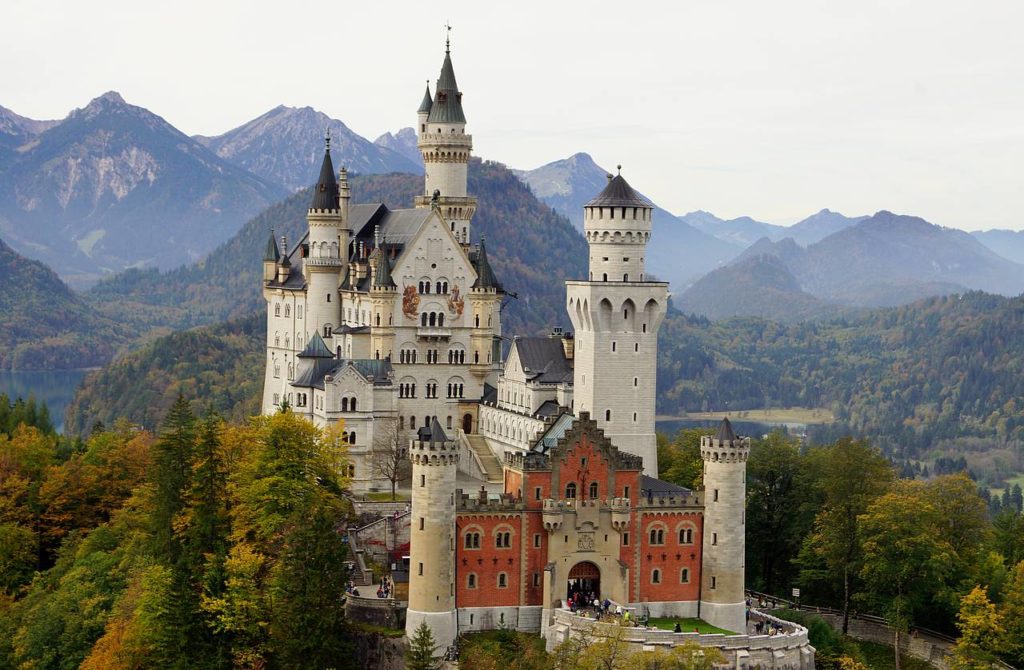
Neuschwanstein Castle combines all of the typical characteristics of a Medieval Castle. It has steep walls, turrets, gatehouses, and ramparts. The castle also bears several features from Romanesque Revival Architecture, including rounded arches, and bold, simplified geometries. Neuschwanstein Castle is regarded as a masterpiece of Romantic Architecture. Its design was replicated numerous times throughout Europe and it remains one of the Romantic Movement’s most influential buildings. Today, Neuschwanstein Castle is no longer a private residence and is open to the public. It’s located about 90 minutes by car from the Bavarian Capital Munich, and is one of the city’s best day trips.
2. Pena Palace – Sintra, Portugal
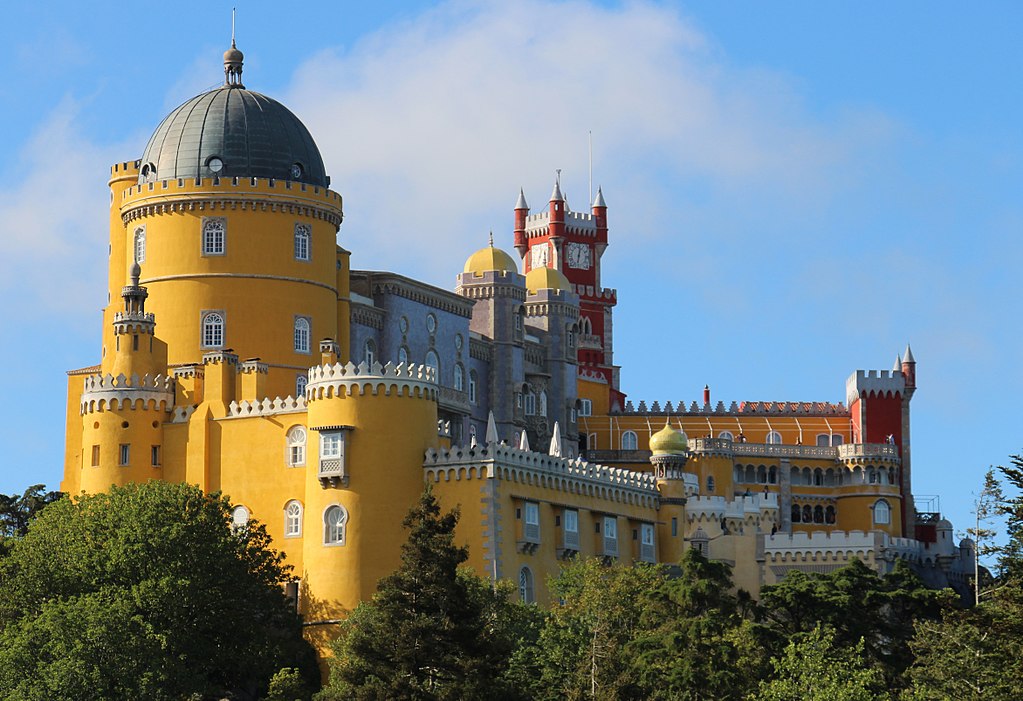
Pena Palace is another Romantically Styled Castle. It was completed in 1854, and financed by the King & Queen of Portugal, Ferdinand II & Maria II. Although never intended for defense, Pena Palace still includes towers, ramparts, and bastions, and it’s perched high on a hilltop in a formidable position. The palace is also a great example of Eclecticism – an architectural technique that fuses elements from multiple other styles.
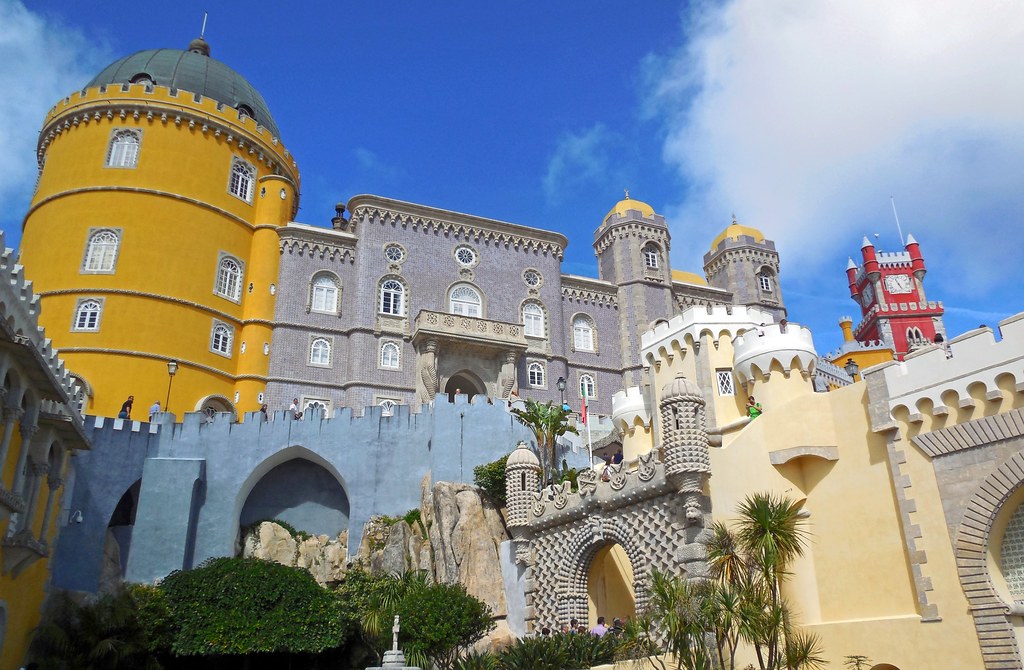
Pena Palace is located in the historic city of Sintra. Sintra is located about 18 miles (28 km) northeast of Lisbon and was once a popular getaway for the wealthy Portuguese nobility. In addition to Pena Palace, Sintra contains many large manor houses and villas and is home to a well-preserved Moorish Castle. Pena Palace is one of Portugal’s architectural highlights, and it draws thousands of visitors every year thanks to its unique appearance and iconic location.
3. Cité de Carcassonne – Carcassonne, France
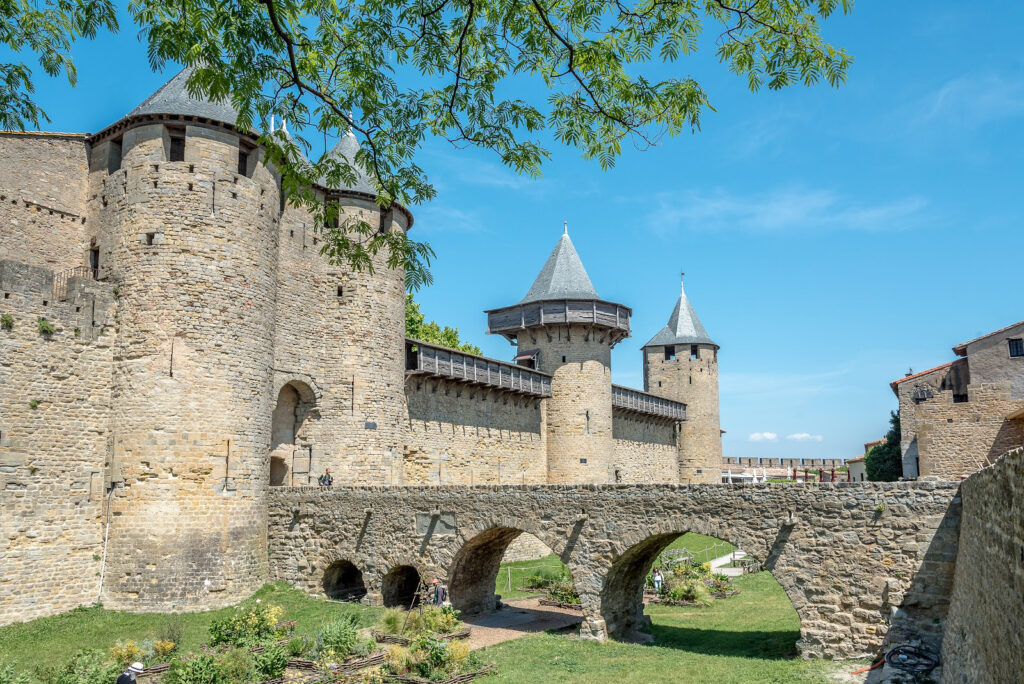
Carcassonne is a city in Southern France’s Occitania region. The city has a long and dignified medieval history. Carcassonne was once surrounded by a ring of Medieval City Walls, however, they were in a state of disrepair by the 19th century. Violet Le Duc was commissioned to spearhead their reconstruction. Le Duc focused on historical accuracy mixed with Romantic Age ideologies. Today Carcassonne bears many Romanticized updates – like its conical spires and retouched towers. Carcassonne was one of the most successful retrofits of the Romantic Age, and it brought a lot of fame and subsequent commissions for Violet Le Duc.
4. Windsor Castle – Windsor, England, UK
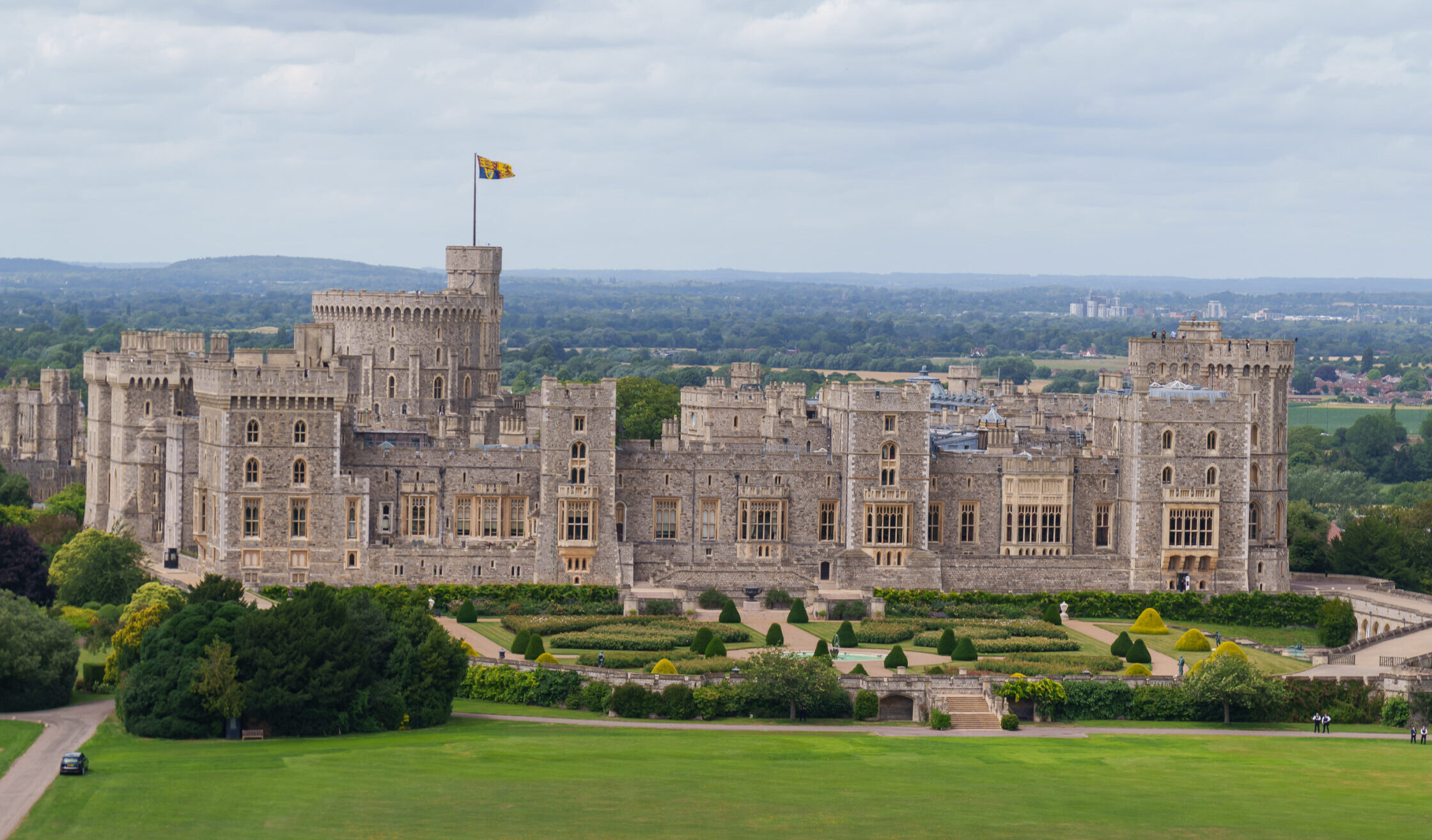
Windsor Castle is a great example of the many Romantic Castles found in the United Kingdom. The first fortress at this location was a simple Motte and Bailey constructed in the 11th century. It was commissioned by William the Conqueror shortly after the Norman Conquest of England. Windsor Castle continued to function as a fortress for centuries and eventually, it was turned into one of the finest Royal Residences in Europe. Most of the Romantic-Era portions of the building date to a large expansion that occurred in the 1820s, during the reign of George IV. Today Windsor Castle is still a residence of the British Royal Family and it has many private spaces utilized just by them.
5. Fisherman’s Bastion – Budapest, Hungary
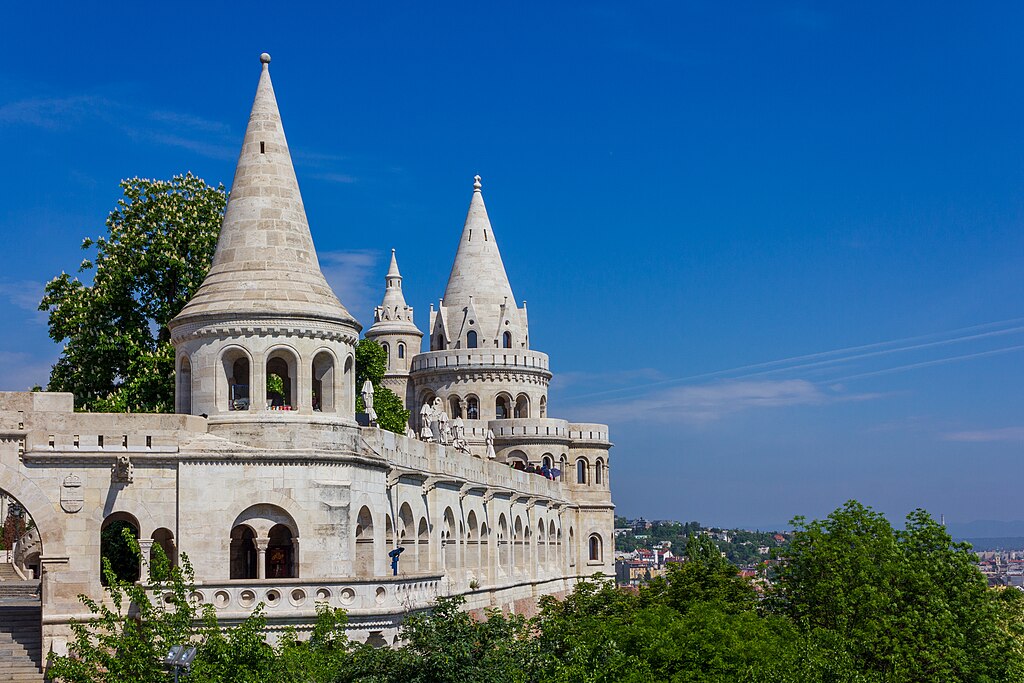
The Fisherman’s Bastion is a great example of Romanesque Revival Architecture within Budapest. The structure is a Romanticized representation of a castle, containing towers, turrets, and other defensive features. Work began on the Fisherman’s Bastion in 1895 and it was part of the preparations for the Hungarian Millennium Celebration of 1896. It overlooks what was once a neighborhood of sailors and fishermen, which is how it gets its name. The Fisherman’s Bastion has become one of Budapest’s most notable landmarks. Many of the city’s visitors assume the structure is much older than it is, thanks to its Romanticized Medieval Appearance.
6. Peleș Castle
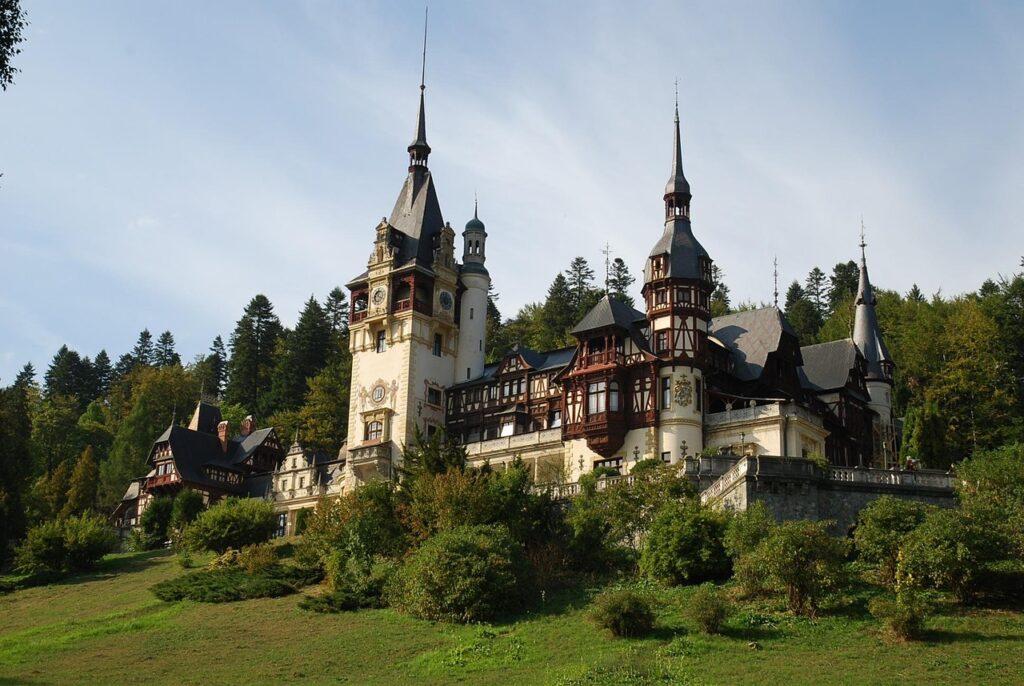
Peleș Castle is a lavish palace built by the King of Romania, Carol I. It was Constructed from 1873 until 1914. Its design utilizes all of the typical elements found in Romantic Age Castles. It contains towers and turrets, in addition to other defensive components. Peleș Castle also has an eclectic design, which utilizes elements from the Renaissance Revival movement. The building was outfitted with many modern comforts from the period, including running water and electricity. Peleș Castle is also famous for its elaborate gardens, which are filled with Renaissance Statues and precisely manicured plants.
7. Château de Pierrefonds – Pierrefonds, France
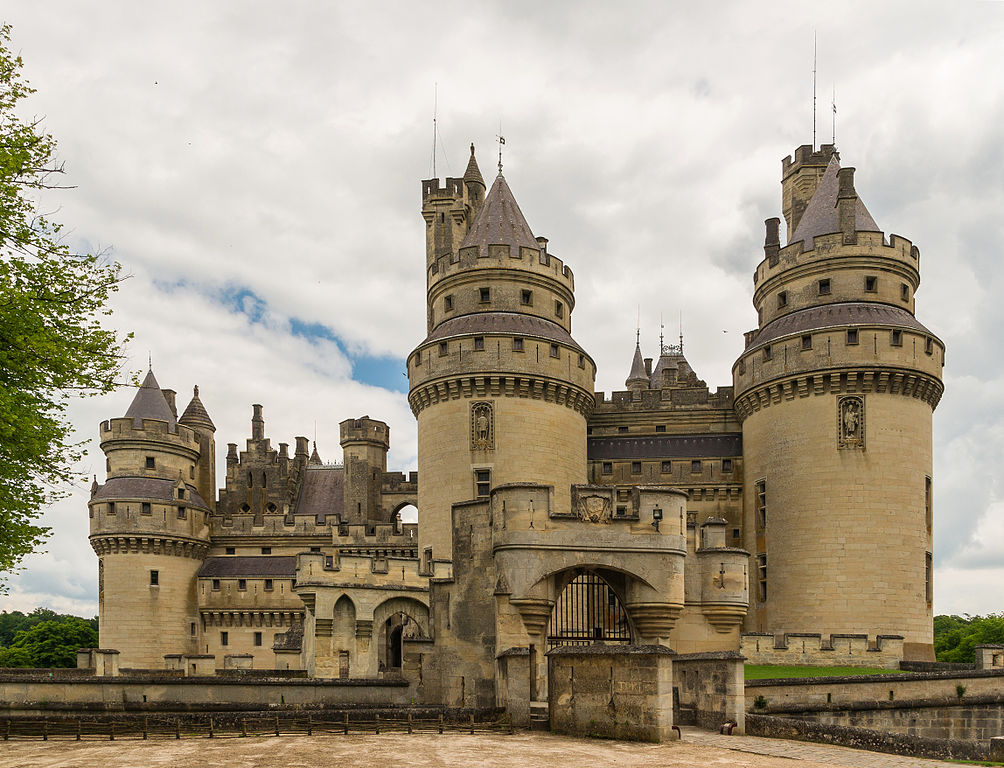
Just like Carcassonne, Chateau Pierrfonds is one of many impressive Romantic Age Castles designed by Violet Le Duc. The Chateau stands on the foundation of a much older Medieval Castle. However, it was completely transformed during the mid-19th century. The Chateau is similar to many of Le Duc’s other works. The design is meant to be picturesque, creating a fantasized and enhanced version of the Medieval structure built here in 1407. Château de Pierrefonds is one of Violet Le Duc’s greatest projects, in addition to Carcassonne and Notre-Dame de Paris.
8. Hohenzollern Castle – Hechingen, Germany
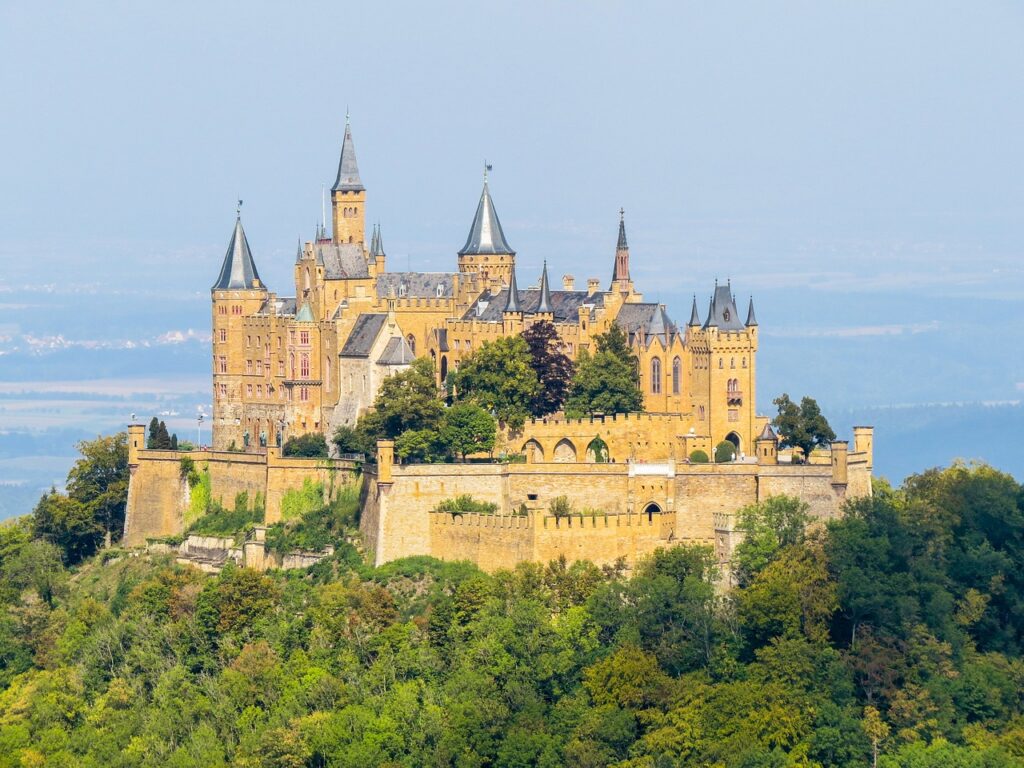
Hohenzollern Castle is located on a hilltop about 39 miles (64 km) south of the German city of Stuttgart. The site originally contained a much older Medieval Castle dating from the early Gothic Age. During the Romantic Age of the mid-19th century, the castle was completely transformed by Prussian King Frederick William IV. He was known as a Romanticist King. He commissioned several projects throughout his realm designed to replicate the notable buildings of Germany’s past. Hohenzollern Castle was designed in the Gothic Revival Style and reutilizes many of the building’s original walls and foundations.
9. Schwerin Castle – Schwerin, Germany
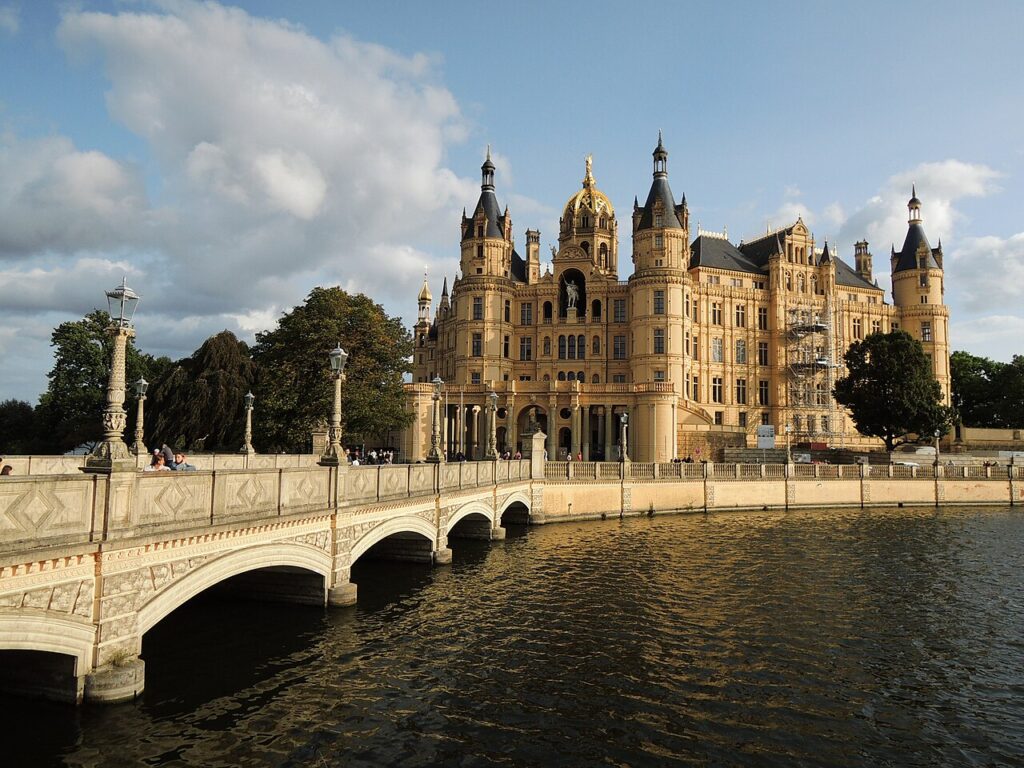
Schwerin Castle was an important medieval fortification located in northern Germany. It has a foundation dating back to the Romanesque Age of the 10th century. Like many other castles from this era, it was continuously modified and expanded over time. Eventually, in the mid-19th century, a large expansion project was completed which turned the castle into more of a palatial residence than a fortress. These renovations were completed in 1857, and they were done in the Renaissance Revival Style. Schwerin Castle contains both Renaissance and Baroque design elements, and the overall appearance is very balanced and elegant.
10. Moyland Castle
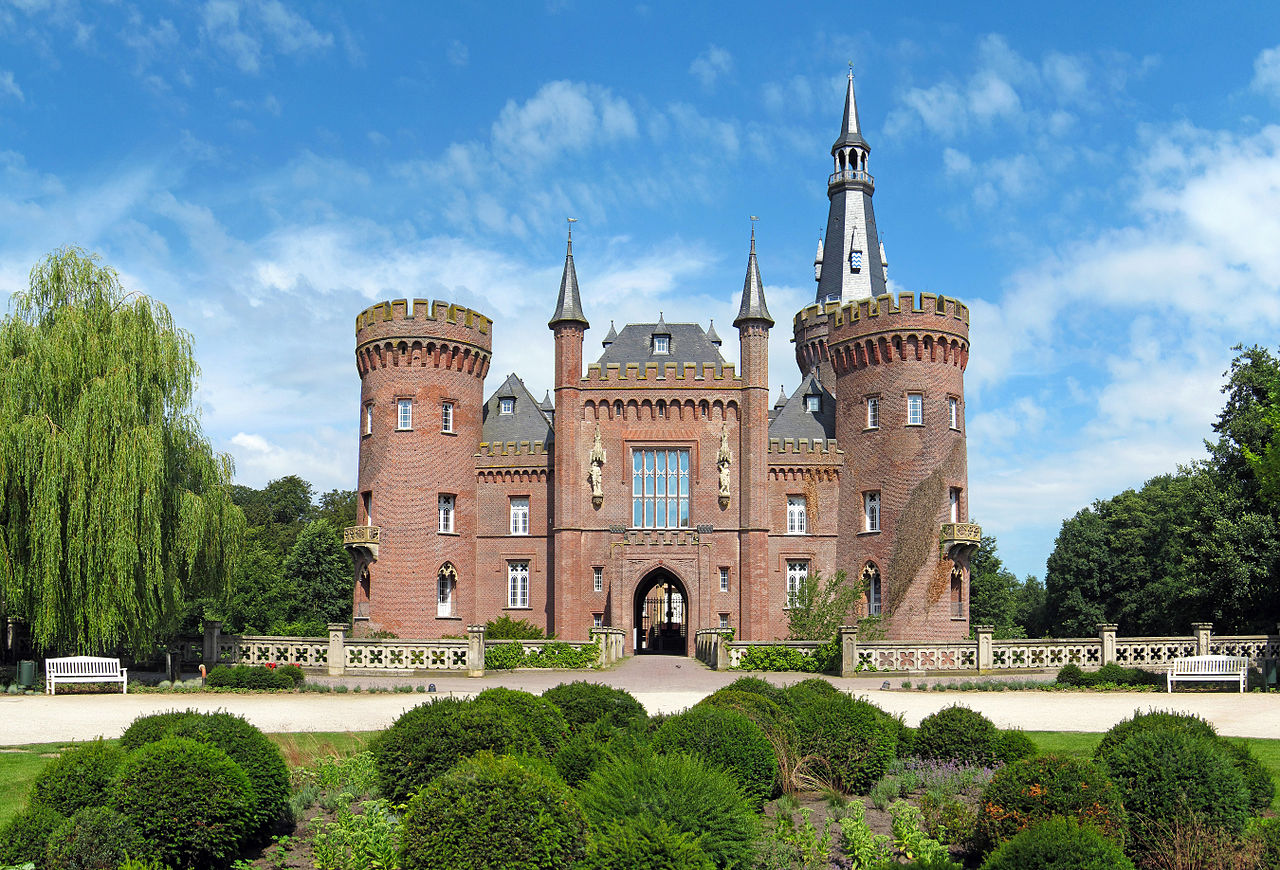
Moyland Castle began as a Gothic-Age fortification located just outside the town of Kleve Germany. The first phase of the castle was completed in the mid-1300s. Moyland Castle was again refurbished in the Baroque Age when it was adapted to face the threat of cannons. The building was again transformed from 1854 to 1862 when it was completely redone in the Gothic Revival Style. This final configuration is true to the building’s original form, and it contains many medieval design elements like pointed arches, round towers, and crenelations.
11. Balmoral Castle
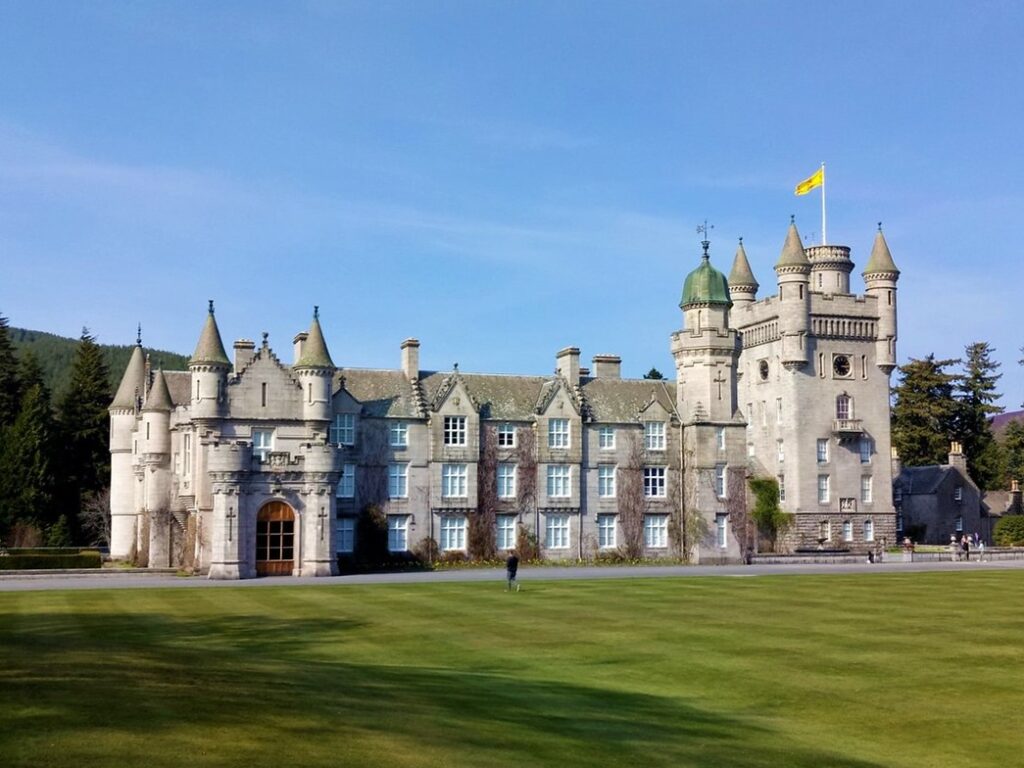
Balmoral Castle is one of many residences still owned by the British Royal Family. The castle was popular with Queen Elizabeth II who spent much of her time here. The current building was completed in 1852 and commissioned by Prince Albert, the husband of Queen Victoria. Balmoral Castle is located deep in the Scottish Highlands, about 48 miles (77 km) outside Aberdeen and roughly 100 miles (160 km) north of Edinburgh. Its remote location makes it popular with the British Royal Family who often use Balmoral Castle to escape from the business of royal life.
12. Johnstown Castle – Johnstown, Ireland
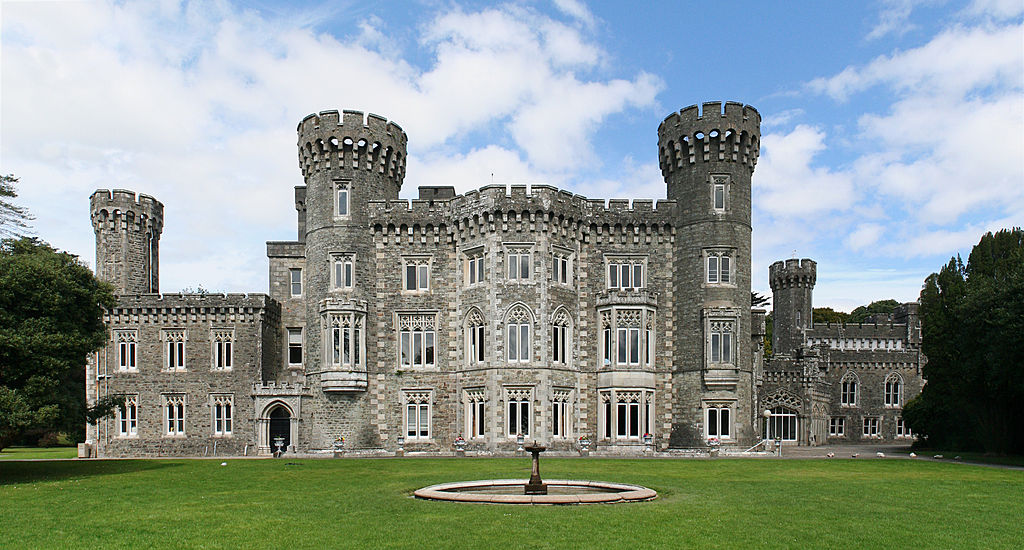
Located about 80 miles (130 km) southwest of Dublin, Johnstown Castle is another impressive Romantic Castle located in the British Isles. It was designed in the Gothic Revival Style and completed in the mid-1800s. The site originally contained a small stone tower constructed shortly after the Norman Invasion of Ireland. Over time, the site was continuously modified, and it was a pretty formidable fortress during the Gothic Age. After falling into a state of disrepair in the early 1800s, a wealthy Irish nobleman completely transformed the building into the lavish residence we see today.
13. Belvedere Castle – Central Park, Manhattan, NYC, NY
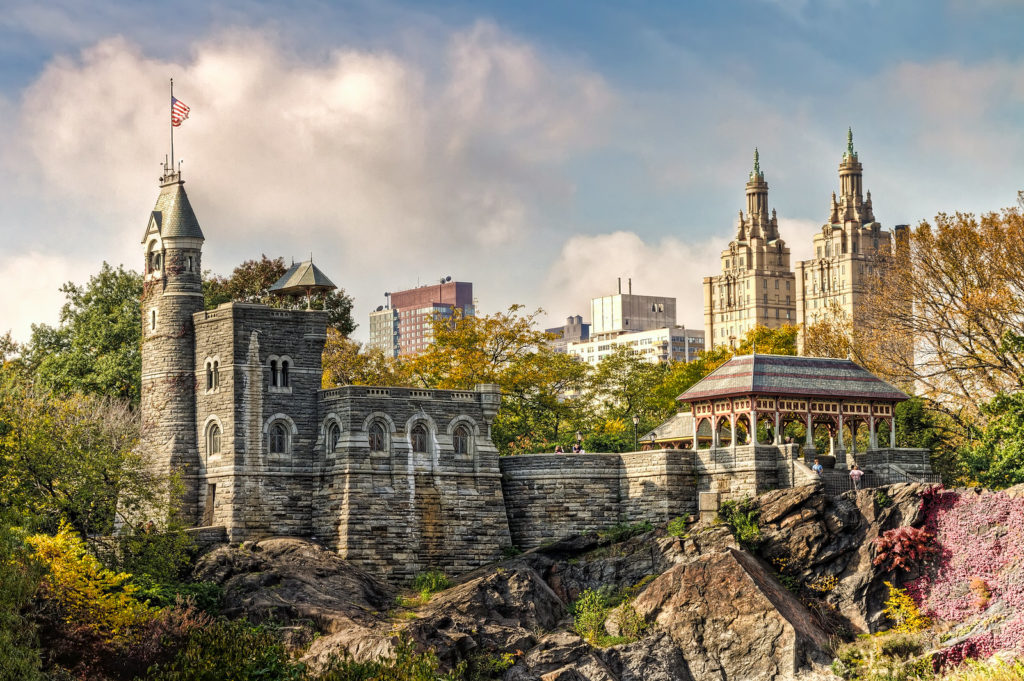
Belvedere Castle is a rare example of a Romantic Castle in The United States. The Romantic Movement began in Europe but was also popular in North America, particularly on the East Coast of the United States & Canada. Belvedere Castle was completed in 1867 and sits within New York City’s famous Central Park. The castle was designed as a simple pavilion to be enjoyed by the public. It fuses various elements from Romanesque and Gothic Architecture and is a great example of Revivalism in the US.
14. Belvoir Castle – Leicestershire, England, UK
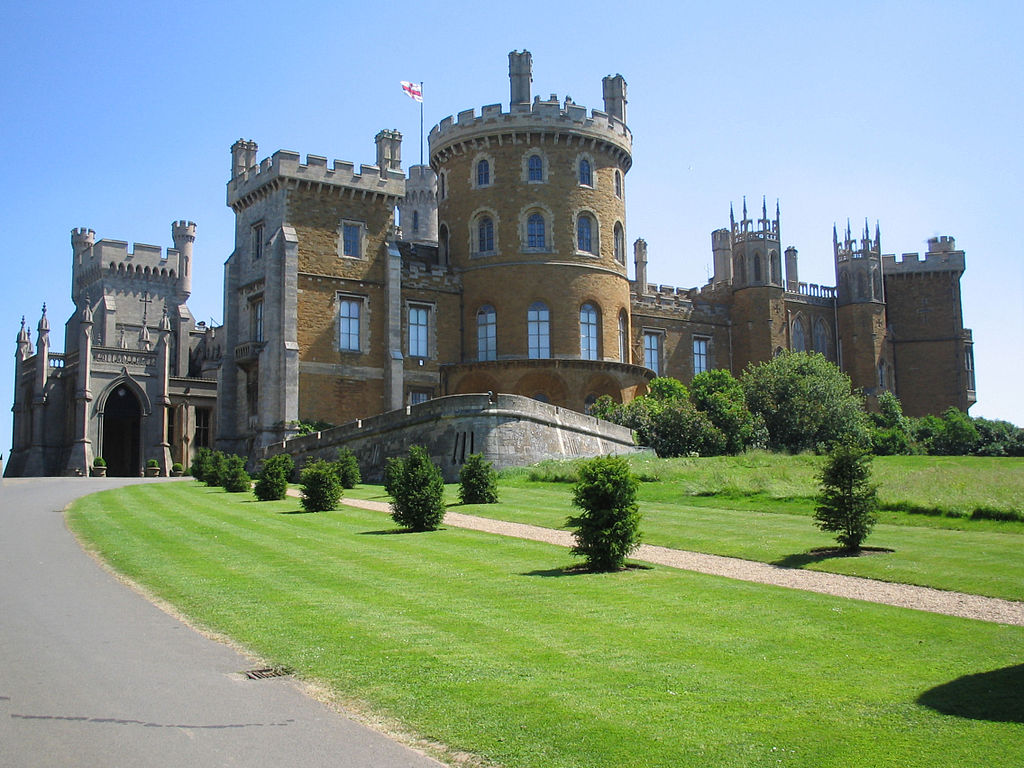
Belvoir Castle is a private residence located in the English countryside. It stands on the foundation of a much older fortress originally constructed by the Normans. Belvoir Castle was completely revamped in the early 1800s and turned into a Romanticized version of a traditional castle. It has elements from the Gothic Revival Style paired with traditional castle features like towers and crenelations. The Gothic Age was a cultural high-point for the Kingdom of England, and English architects in the Romantic Age would often borrow heavily from Gothic designs.
15. Stolzenfels Castle – Koblenz, Germany
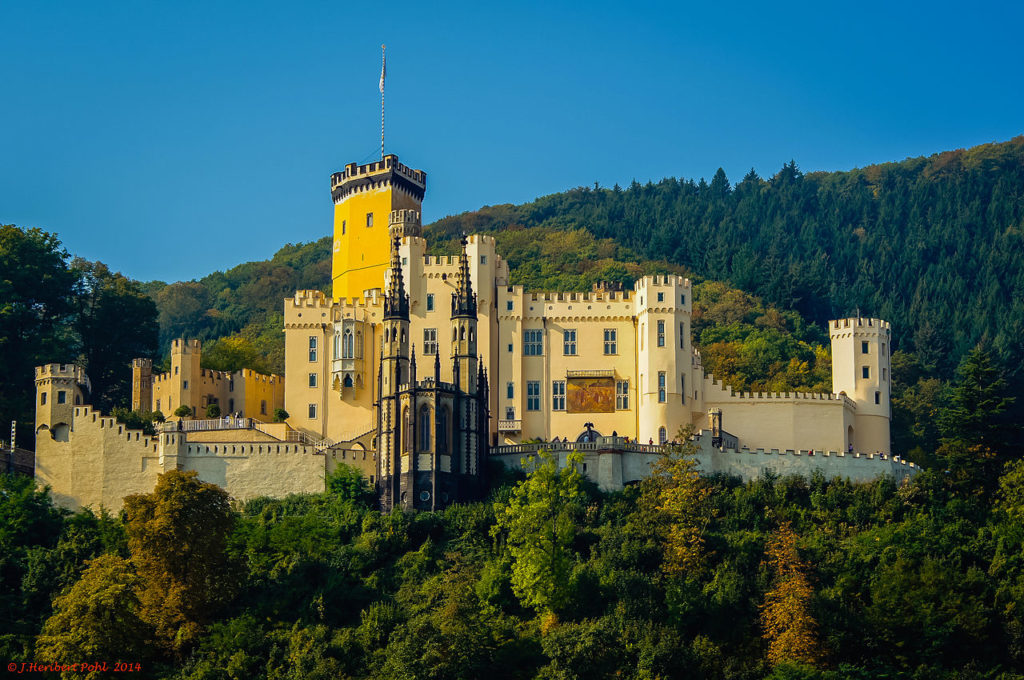
Stolzenfels Castle is another impressive Romantic Castle located in the hills of Germany. The building was constructed by Prussian King Frederick William IV, who is regarded as one of the greatest proponents of the Romantic Age. Frederick also spearheaded other Romanticized projects like Hohenzollern Castle and the completion of Cologne Cathedral. Stolzenfels Castle contains all of the typical elements of Romantic Castles. It has bastions, towers, ramparts, and other defensive elements that were never intended for military use.
Other Examples of Romanticism in Architecture
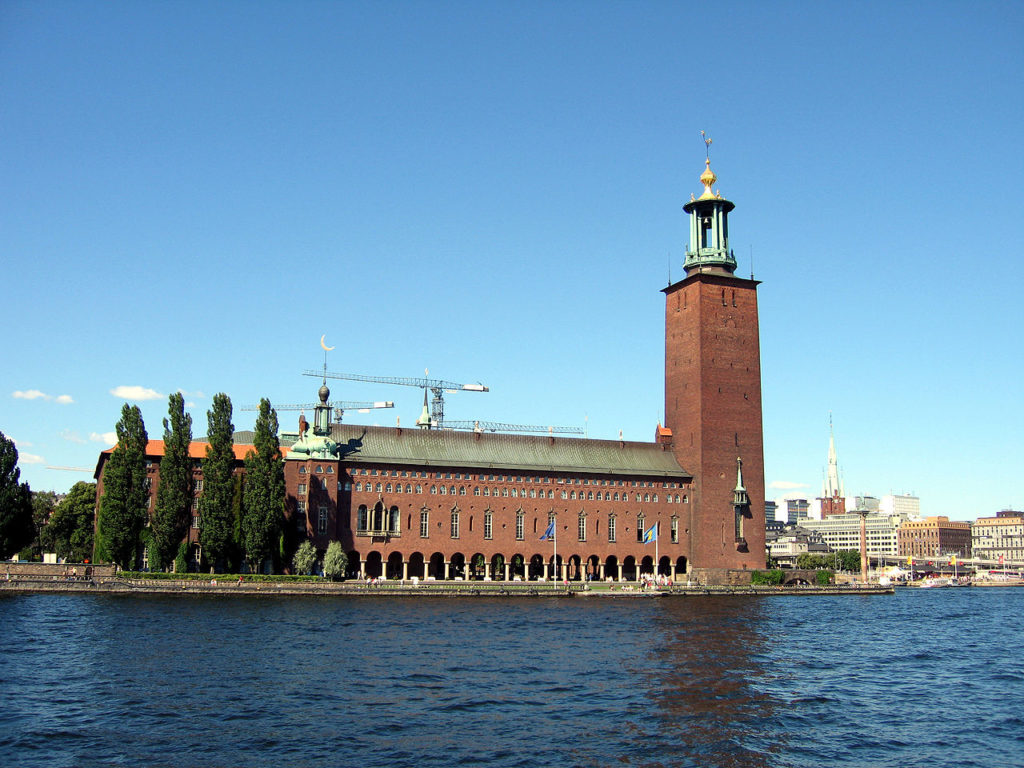
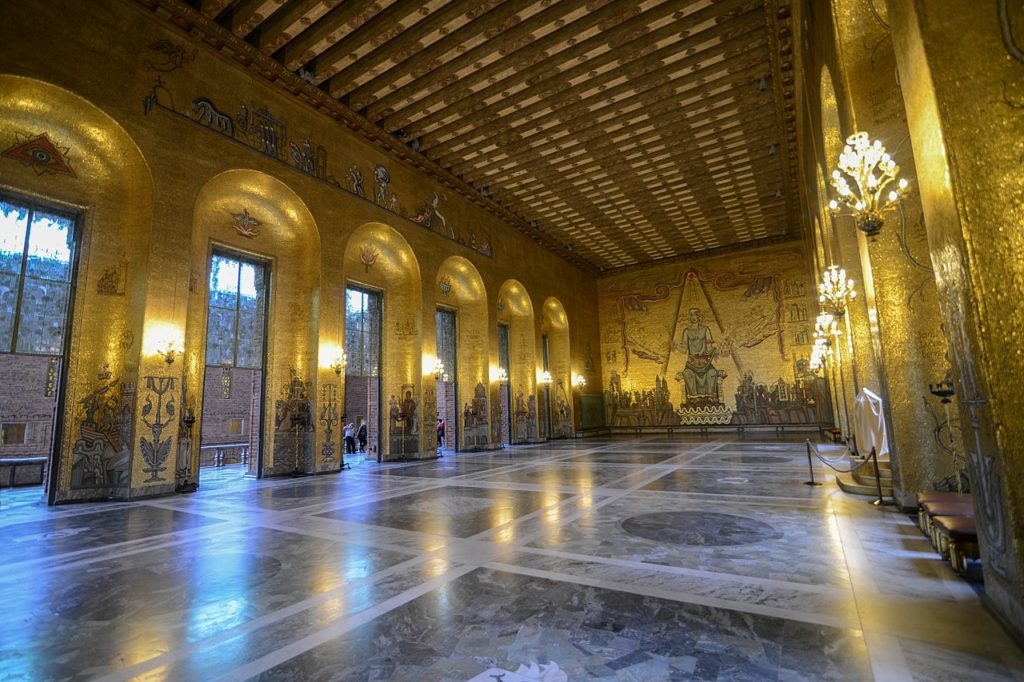
Romanticism is an idea that is visible throughout many different types of buildings. In addition to castles and palaces, many government buildings utilized the ideals of Romanticism. One great example of this is the City Hall in Stockholm Sweden. The building was designed in the National Romantic Style. It combines Renaissance Revival Elements, paired with Traditional Swedish Architecture. It also utilizes motifs from Swedish culture and traditions such as sculptures of fish, and a mosaic depicting the city’s Lady of the Lake. Stockholm City Hall houses many of the functions of the local government, and its waterside location makes it a popular hangout spot.
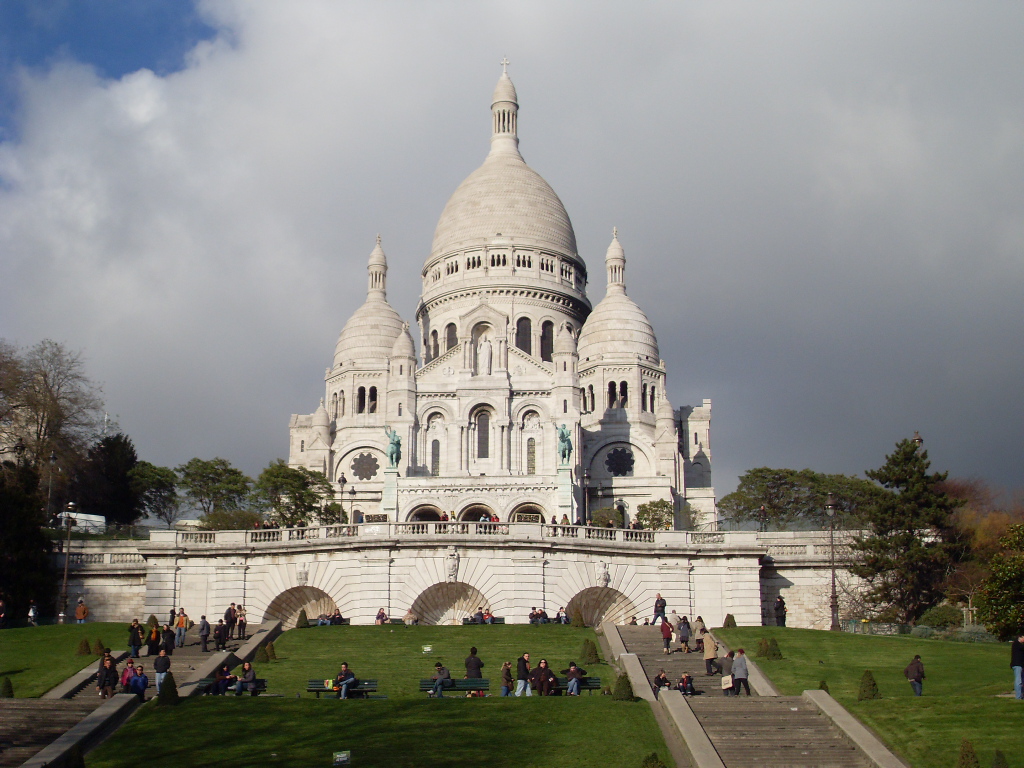
Many people also consider the Revival Movement an example of Romanticism in Architecture. The image above shows the Basilica of Sacré-Cœur in Paris, France. The Basilica sits on a prominent plot of land at the summit of the Montmartre, and construction began on the church in 1875. The Basilica of Sacré-Cœur has a unique design, that combines characteristics from Byzantine and Romanesque Revival Architecture.
Legacy of the Romantic Age Castles
Romanticism was an idea that completely transformed architecture in the 19th century. Many architects began studying Europe’s Medieval Past and wished to design new buildings that embodied the spirit of this now long-gone age. Romanticism influenced other architectural ideologies such as Historicism, Revivalism, and the Picturesque Movement. Today, there are countless Romantic Age Castles located throughout Europe and the rest of the world. Buildings like Neuschwanstein Castle and Pena Palace are still frequently visited, and they are a testament to the lasting legacy of the Romantic Age.
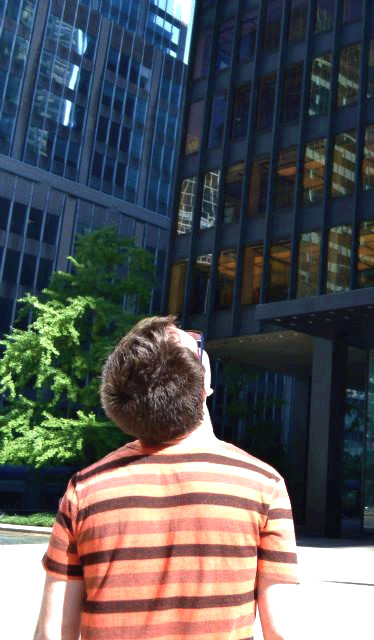
- About the Author
- Rob Carney, the founder and lead writer for Architecture of Cities has been studying the history of architecture for over 15 years.
- He is an avid traveler and photographer, and he is passionate about buildings and building history.
- Rob has a B.S. and a Master’s degree in Architecture and has worked as an architect and engineer in the Boston area for 10 years.
Like Architecture of Cities? Sign up for our mailing list to get updates on our latest articles and other information related to Architectural History.
